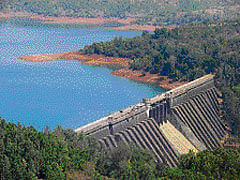India to construct tunnel for quake studies

Through the tunnel, scientists will lower a string of instruments for setting up an underground seismic observatory, which will collect data to help understand the complex geophysical processes leading to an earthquake.
“Koyna is the only place in the world for this experiment as quakes are happening within a small area of 20x30 km and even within that 600 sq km, they are concentrated within a core area of 5 sq km,” Harsh Gupta, who successfully predicted Koyna dam’s potential to trigger earthquake more than three decades ago told Deccan Herald on the sidelines of the 98th Indian Science Congress here.
The first step on this Rs 350-crore experiment would be taken on Friday with India signing a memorandum of understanding with the International Continental Drilling Programme ensuring participation of foreign scientists in this project. “By June, we would be able to finalise the scientific plans and go for the Cabinet approval. The actual construction work may start only in 2012,” said Shailesh Naik, secretary in the Ministry of Earth Sciences.
An international workshop will be organised in March. Later, scientists will go to the site to decide the tunnel’s exact location.
Once the observatory is in place, the researchers will record hundreds of tiny quakes with magnitude one and more every year besides four to five quakes of magnitude 2 and at least five to six quakes of magnitude 3 and above. They also hope to get at least one magnitude 4 or 5 quake once in every two years.
The experiment has been initially planned for five years involving a large number of institutions and universities.
There will be enough number of earthquakes to generate data on the stress build up and how the rock behaves under stress condition. This will help understand the physics of earthquake, using which a prediction model can be developed.
“With fresh information, our approach to earthquake prediction will be closer to reality,” said Gupta who had once forecast on quakes in the north-east and raised red flags on Koyna.
Even though deep boreholes were dug to install underground observatories in Kobe (Japan) and Chi Chi (Taiwan), those tunnels were dug at the boundaries of tectonic plates and did not yield much information.
The experiments can neither be conducted at the 1,300-km-long San Andreas fault in California nor in the Himalayan range as there is no way to find out the exact region where the stress is being built up.
